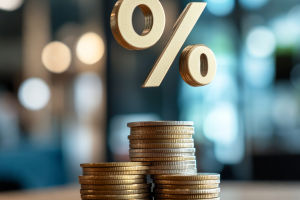Foreign exchange (forex) trading offers unique opportunities due to its high liquidity and 24-hour market access.
Among its most attractive and dangerous features are leverage and margin.
While they can significantly magnify profits, they can also lead to devastating losses if not properly understood.
What Is Leverage in Forex Trading?
Leverage allows traders to control a large position with a relatively small amount of capital. It is expressed as a ratio—commonly 50:1, 100:1, or even 500:1 indicating how much exposure a trader can gain for each dollar invested. For instance, with a leverage of 100:1, a $1,000 deposit gives you control over a $100,000 position. This doesn't mean you own $100,000, but rather that you are trading with that amount on margin. If the market moves in your favor by just 1%, you stand to gain $1,000—a 100% return. Conversely, a 1% unfavorable move could wipe out your entire capital.
Leverage should be viewed not as a tool for faster wealth, but as a mechanism for controlled scaling of trading strategies. The higher the leverage, the tighter your stop-loss discipline must be.
Peter Lynch, the legendary stock picker delivered annualized returns of 29% over 13 years, emphasized that "Far more money has been lost by investors preparing for corrections, or trying to anticipate corrections, than has been lost in corrections themselves."
Margin: The Capital You Must Commit
Margin is the amount of money a trader must deposit to open a leveraged position. It acts as collateral and is not a fee or cost. Margin requirements vary depending on the currency pair, trade size, and leverage ratio. For example, if you're trading with 100:1 leverage, you'll typically need to put down 1% of the position size. A $100,000 position would therefore require a $1,000 margin deposit.
Two key types of margin are critical:
Initial Margin: The amount required to open a trade.
Maintenance Margin: The minimum amount needed to keep the position open.
How Leverage and Margin Work Together
Leverage and margin are two sides of the same coin. Leverage increases your exposure, and margin reflects the capital needed to maintain that exposure. Misunderstanding this relationship is where many novice traders falter.
A common misconception is that high leverage always means high risk. In reality, the risk is not in the leverage itself, but in the trader's use of it. Using leverage without adjusting trade size or risk management tools like stop-loss orders can expose traders to catastrophic losses even on minor price shifts. Margin isn't just a financial requirement—it's a psychological benchmark. It forces you to confront the real cost of holding a speculative view in a volatile environment.
Margin Calls and Stop-Outs: The Unforgiving Side of Leverage
A margin call occurs when your equity (balance including unrealized profits/losses) falls below the required maintenance margin. In such cases, brokers typically request that you deposit more funds to cover the margin shortfall. If no action is taken, the broker may initiate a stop-out, closing your losing positions automatically to prevent further account depletion.
This process is often automated and can occur without prior notice, especially during highly volatile market conditions such as central bank announcements or geopolitical events. Understanding your broker's margin call and stop-out levels is essential for risk management. These thresholds can vary—some brokers stop out trades at 50% margin level, while others may act at 20%.
Risk Management Strategies When Using Leverage
To use leverage responsibly, professionals often rely on strict risk parameters. A few tried-and-tested methods include:
Position sizing: Adjusting your trade size based on the percentage of your capital you're willing to risk. Many seasoned traders risk no more than 1-2% of their equity on a single trade.
Stop-loss orders: These automatically close your position if the market moves against you by a predefined amount.
Risk/reward ratio analysis: Calculating potential loss against potential profit to ensure that the upside justifies the risk.
Psychological Aspects: Why Overleverage Feeds on Greed
Leverage can lead to a dangerous sense of invincibility. When small wins accumulate rapidly, traders often begin to take bigger risks—misinterpreting luck as skill. This psychological bias, known as overconfidence bias, is one of the primary reasons leveraged traders blow out their accounts.
The human brain is wired to seek immediate reward. Leverage offers the illusion of quick returns, but when misused, it reinforces risky behavior and deteriorates trading discipline. Maintaining emotional neutrality, avoiding revenge trading, and sticking to a pre-defined trading plan are the cornerstones of surviving and thriving in leveraged environments.
Leverage Trends: How Regulations Are Shaping the Landscape
In response to numerous retail losses, financial regulators in recent years have stepped in to cap leverage for individual traders. For example, many regions now limit leverage to 30:1 or less for major currency pairs. This regulatory shift aims to protect investors from themselves, promoting more sustainable trading behaviors. Additionally, newer margin call transparency rules have increased the importance of real-time equity monitoring and platform education.
Leverage and margin can turn forex into a lucrative venture or a fast path to capital loss. What makes the difference is knowledge, preparation, and discipline. Trading on margin should always be preceded by a comprehensive risk assessment and a well-crafted plan. Every decision must be informed not only by potential profit, but also by worst-case loss.


